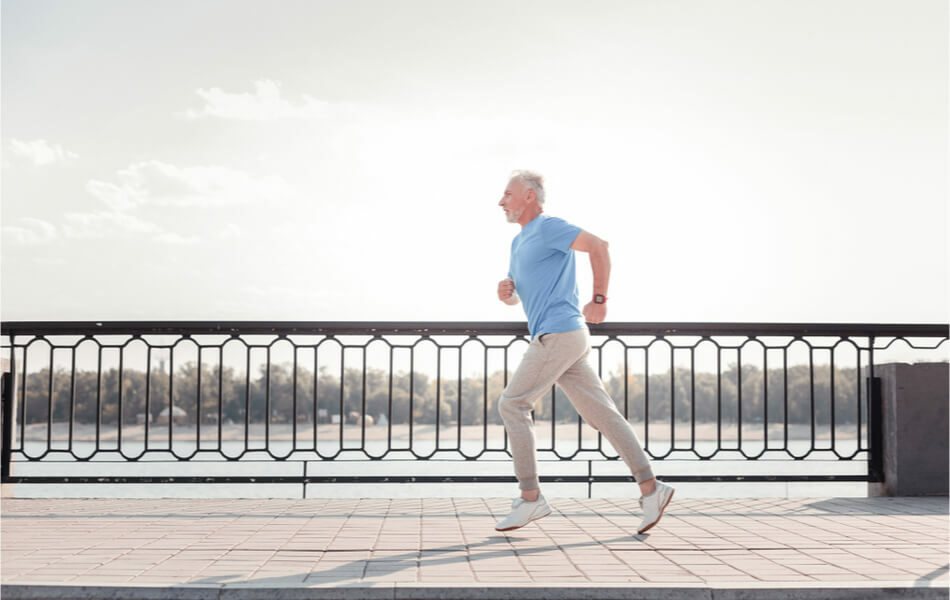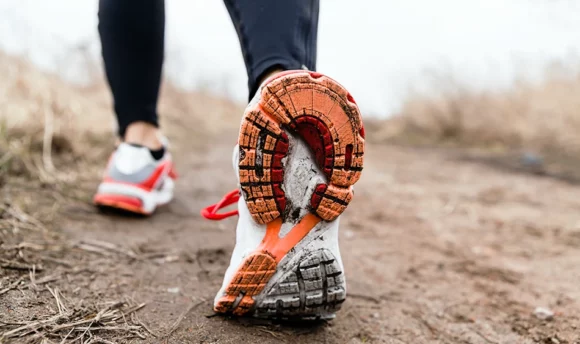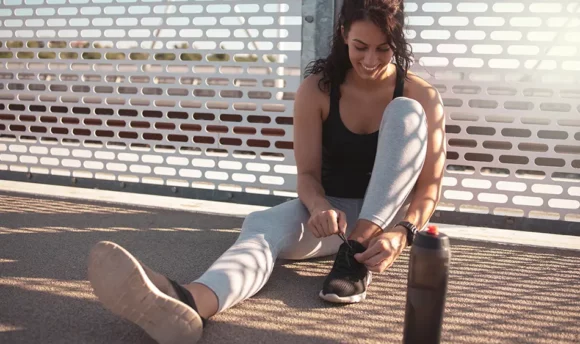How to Start Running at 60? Tips That You Should Know About Running in Your 60s
Getting older doesn’t mean you can’t run to maintain your health. Here’s a guide to how you can continue running at 60.

Are you 60 and above and worried about whether it’s a good time to start your running exercise routine? Old age shouldn’t be a limiting factor when it comes to whether you should exercise or not.
Getting older comes with the territory of bone density loss and reduction in muscle mass. Running or jogging is one way to avoid these aging effects and improve your chances of reducing their occurrence.
Few older adults know how to become senior runners and improve their health by running. In this article, we’ll explain how you can start running at 60 and give tips to excel at this enjoyable exercise.
Can You Start Running at 60?
Of course, you can start running at 60. There’s no age limit for running and staying fit. Besides, being over 60 means you need exercise now more than ever.
As you age, it becomes increasingly essential to maintain stellar physical and mental health as the signs of aging set in. Running at 60 has immense benefits as it helps you maintain overall health, control weight, and maintain muscle tone, suppleness, and general mobility.
Running also helps you enjoy better sleep. Older adults are known to develop sleeping problems as they get older. However, research has shown that older runners can experience good sleep over those who do not exercise or run. It prevents bone loss as well.
Instead of trying to beat your record from your younger years, work your way up from a stable pace instead of running right from your top speed and harming yourself. You risk muscle and bone damage if running too much or for larger distances and speeds than necessary.
However, problems may arise when you compare your current self with your younger self. It would help if you didn’t try to extend yourself beyond your current capabilities and health level to reach your old running capacities.
What Is the Age Limit for Jogging?
The age limit for jogging is not predetermined for everyone because it depends on the individual’s physical and mental health. That said, age does have a reasonable impact on your running performance, says a National Library of Medicine study.
Statistically, older runners aged 60 and above experience a decline in their half marathon performance and other distances. Also, as you age, your heart doesn’t pump blood as efficiently as before. There’s less flexibility in the muscles and a reduction in muscle strength.
Without proper planning and monitoring by a physician, these effects of aging can limit you, your health, and what you can achieve. That’s where running programs come in.
Running Program for Seniors
Running at 60 doesn’t feel or work the same as running at 20 or 30, and your running plan wouldn’t be the same. The Joggo app puts together a training or running program for runners of all ages, including older runners above 60.
Using the information you provide, Joggo develops a running program with an eating plan, breathing exercises, and workouts to boost your running performance while keeping the correct posture and monitoring your run.
Running at an older age, you’re even more susceptible to injuries and the occasional strains. The recommended Joggo program would specifically target the prevention of muscle injury or damage. In addition, it includes a recovery plan to help you stay on your feet for longer and more efficiently.
The program also specifies rest days, so take advantage of those and rest as needed. But, most importantly, stick to your schedule with determination and resilience to achieve your desired results. Remember, you should only do what works best for your body and not someone else’s.

- Personalized running plans created by professional coaches
- Meal plans perfectly tailored to your current diet, allergies, and health needs
- Treadmill mode for people preferring indoor running
- Educational articles on easier running, injury prevention, nutrition, and more
- Behavior science-based reward system for lasting motivation
5 Steps That Will Help You Start Running in Your 60s
It’s common to find older adults who weren’t runners or fans of exercising before turning 60 years old. As they age, they see the importance of staying fit and improving their physical health.
If you’re in this category, there’s a good chance you wouldn’t know exactly where to start when you finally decide to include running in your workout routine. Below are steps you should take to ease the process.
#1 Consult with a family doctor
Aside from regular check-ups with your physician, it’s also essential to check with your doctor before starting any strenuous activity at that age. This is especially true for older adults who have cardiovascular diseases.
People in such a situation aren’t encouraged or recommended to run or jog excessively. Starting a running routine might aggravate or trigger certain conditions, and your physician would be able to tell you.
Whether you should start running or not, and just how much running you should do, given your health, is best advised by your doctor. You may harm yourself by going straight to exercise without a doctor’s input.
#2 Start with walking
Whatever stage of running or exercise you’re on when you begin to age, you should learn to start slow and begin with brisk walking. Of course, some runners without running experience would prefer to jump right into running, but they’ll pay dearly for it later.
Starting the routine with a walk would allow you to gradually increase your pace and difficulty level according to your heartbeat per minute. If your heart rate is too high, you should be able to bring it down with calm and ease.
An elderly runner might walk instead of running because of poor eye-sight, muscle pain or injury, weak calves, or other health issues. If you have any of these, consult your doctor before engaging in any running exercise.
#3 Light jogging
Once you’ve settled into your walk, you can then advance to a light jogging pace before you start running. By jogging lightly, you’re enhancing balance and bone density.
As an endurance exercise, jogging also helps to strengthen your respiratory system by increasing your breathing and heart rate and keeping it steady at a specific rate. It’s also a safe option for people who can’t run at a full running pace.
If you discover that you have a condition that limits you from pushing your physical boundary, your physician might recommend light jogging as an alternative. Ensure you pay attention to your body and vitals to avoid going overboard.
#4 Slow-pace running
The watchword for exercising at an advanced age is caution. Running extensively impacts your muscles, and running too fast may put you at risk of injury and intense fatigue.
It might get tempting to speed up quickly, but you mustn’t push yourself too much to meet your running pace from your younger years. Your running performance naturally declines with age, so you should accept that as your new life.
Instead, aim for better health and a more steady run. Run at a steady pace that gives you enough challenge but so much that your body can’t handle it.
#5 Don’t forget cross-training
Cross-training involves utilizing other exercise routines outside of your primary sport. In this case, it means including other workouts into your running routine.
The human body loses muscle mass as it ages. If you aim for improved running performance, you need to start cross-training as an older person. If your lower body is weak, your running form and performance will also be weak.
To avoid that, include strength training exercises that will help you build bone density and reduce the rate of muscle mass loss as you age. Cross-training exercises that older adults can add to their routine include hill training, yoga, swimming, and weight training.
Hill training strengthens your calf muscles, minimizes fast-twitch muscle fiber shrinkage, and improves your stride. Yoga or Tai Chi helps with flexibility, swimming builds endurance and weight training exercises like bench-pressing build muscle strength.
4 Tips to Help You Get Back on Track at 60
Many older people may have stopped running as an exercise and are finding it hard to get back to. When you finally decide to start running again, these four tips will help to push you through.
#1 A balanced diet comes first
When you start running again, you need all the nutrients and fuel for your run. Eating healthy supplies you with the necessary sources of nutrients to enable you to run better and improve your health.
Eat foods high in protein to help build muscle mass and carbohydrates to build energy. Also, eat lots of fruit and veggies, whole grains, seafood, poultry, seeds, and beans.
While designing your nutrition plan, consider if you’re taking medications and what they are for. Some foods may contain substances that interfere with the work your pills are supposed to do. If you’re not sure, ask your doctor about foods to avoid while taking those drugs.
#2 Always stay hydrated
Hydration is essential while exercising. For example, when running, your body loses water quickly, and you need to replenish all that’s lost.
It’s super important for the younger demographic to drink water, but for elderly runners, this is even more crucial. This is because your kidneys don’t work as well as they used to, so your body wouldn’t always know when to signal that it’s thirsty.
That’s why you should time your water drinking and not forget to drink. Drinking water before, during, and after your run helps speed up recovery and prevent dehydration and muscle strain.
#3 Don’t forget to stretch before and after
Warming up your muscles with stretches before and after a run can increase muscle flexibility and reduce workout soreness, especially as an older adult, says research. Other runners make the mistake of not stretching, and that’s not good for your health.
You run a higher risk of injury if you run with cold, unstretched muscles, even if you run at the slowest paces. In addition, getting old comes with less flexibility, so you must ensure you’re deliberately staying flexible.
Pre-run stretching helps warm your muscles, and post-run stretches help ease workout recovery.
#4 Increase gradually
Take things steady and gradually, from your speed to workout intensity and running distance. Increasing your workout intensity slowly gives your body time to adjust to the new workout plan you might be on.
Before you stopped running, you probably had a good run time, but now, you don’t have that luxury of youth to maintain such times. As a result, you have to pay more attention to yourself now, not what you should have been.
Another reason for the gradual increase is that it saves you from fixating on the luxury of youth that once allowed you to maintain a high running pace. As a senior, you have to pay more attention to your general health and not what you could do before.
A Word From Our Coach
Running as an older adult, you need more than just strong legs and a balanced diet. Experienced runners might remember this, but new runners may not know the importance of running with the right running shoes and overall gear.
Select a breathable pair with great neutral and under pronation. It absorbs impact at footfalls and has a comfortable fit. If they’re uncomfortable and tight-fitting, you might be tempted to give up on your running goals and find something else to do.
Good running shoes will improve your running performance and grip your feet for better form.
Remember that you might need physical therapy through all these because older people are at risk of developing mobility problems.
Once you have all these on lock, your running distance, like half marathons, also matters. Apply the same principle of gradually increasing your efforts and goals here, and do not start with a full marathon. Your goal is a healthier body, not a broken-down one.
Conclusion
Getting older doesn’t mean you can’t do what you love and maintain balance and good health. However, you first have to accept the aging process and embrace it. For example, running will improve balance, overall health, and weight management, strengthen weak knees and help you stay happier.
Older adults must remember to follow through with their Joggo program, eat a balanced diet and stay hydrated. In time, you’ll be on your way to success with a healthy heart and mind while running at 60.

















































 Select your language:
Select your language: 








